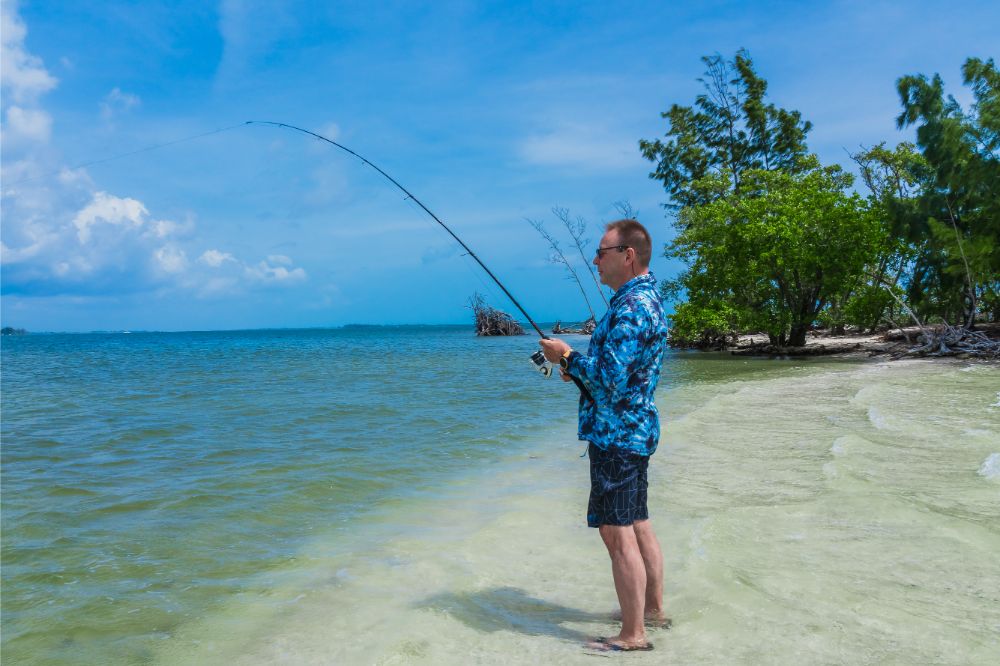
How to Catch Surf Perch: All You Need to Know
Perhaps the most abundant and popular target for any surf angler is the surfperch – it’s a saucer-shaped, slim creature that can weigh as heavy as 2 pounds. One of their more unusual features is that the females give birth to live young that resemble miniature versions of the adult perch.
You’ll find nine different surfperch species on the coast of California, though barred surf perch are caught most often. Surfperch schools often culminate around 30 feet off the shoreline, zipping in and out of the rapid surf as they look for food.
They’re a great, easy target for most anglers, which is what makes them a popular option to catch. Here we are going to take a look at how to catch surf perch and look at everything you need to know.
More About the Surfperch
The Pacific surfperch is a tasty little fish with firm, white flesh similar to that of its distant cousins, the sea bass, snapper, rockfish, bream, and porgy. Many recipes for those fish also work with surfperch.
Surfperch are staples in the shore angler’s repertoire. They’re saltwater fish that are found on the Pacific Coast of the United States. They are part of the perciform fish family (perch-like shape). They have a mild flavor and soft texture, making them excellent for eating.
They’re a great fish for any recipe for white fish, including soups, tacos, and sandwiches. However, you’ll find that most people prefer to cook them whole to preserve their flavor and pretty appearance.
The Equipment You Need
Catching surfperch will require heavy tackle, and not just to grab hold of a fish that weighs 2 pounds, but to keep up with the challenging surf that these fish reside in. There are, of course, many personal preferences with regards to tackle, but a great starting outfit includes the following:
- 15 to 30-pound monofilament line
- A spinning reel large enough to hold 200 to 300 yards of monofilament line
- A long rod that can handle a 2 to 6-ounce weight
If you prefer to test surfperch fishing out before you go out and buy some new tackle, some sporting stores will let you rent their reels and rods daily.
Footwear
There’s no doubt about it – if you are angling in any surf, your feet will get wet. If water and air temperatures are at a comfortable level, most anglers will wear some sandals and shorts and get a bit wet.
If the waters are a little too cool for comfort, you’ll probably be better off in some good hip boots to keep the legs and feet dry. Chest waders may also be quite comfortable if the weather is rainy and cold, but they’re generally unnecessary.
Bait
Some of the most popular baits for surfperch are mussels, mole crabs, marine worms, sand shrimp, and clam necks. Your choice will likely depend on convenience, availability, and, of course, personal preference.
Many anglers enjoy gathering worms, crabs, and shrimp at low tide from the beaches that they’ll fish at later. Moreover, many surfperch anglers use plastic baits that are more convenient to use, as they stay on the hook well and catch fish easily.
Terminal Tackle
One of the more popular surfperch setups includes #2 or #4 hooks, a pyramid sinker, and a few swivels.
Pyramid sinkers with three sides are common, are easiest when casting, and don’t roll in the surf as much. The exact size of your weight will depend on the surf conditions, as well as how big your rod is – be sure to use anything you need to ensure that your rigging takes place in one area in the surf.
It also helps to connect a three-way swivel around 12-inches above the sinker. On one loop, tie on the first hook with about 8 inches of monofilament. You want just enough here to make sure that the bait stays away from the mainline.
When and Where to Fish
While surfperch are ready to catch throughout the year, their most abundant period is in spring and early fall, when they congregate to spawn along the sandy shorelines. The most productive fishing happens on incoming tides, especially a couple of hours before high tides.
Be sure to use those low tides to look for some good surfperch water. Try to find places where some deep depressions or holes might house some surfperch. Some of the best areas include rocky areas in the sand, sloping beaches with hard-breaking waves, sandy areas near jetties, or areas where the shore falls inward.
Final Thoughts
Now you know everything you need to know about how to catch surf perch. Whether you are new to the fishing world or you have been fishing for a few years and are looking to expand your fishing experiences to include surf perch, the steps above will guide you well on your journey. We hope that you will carry this information into your fishing trips and have successful expeditions. Good luck and happy fishing!
